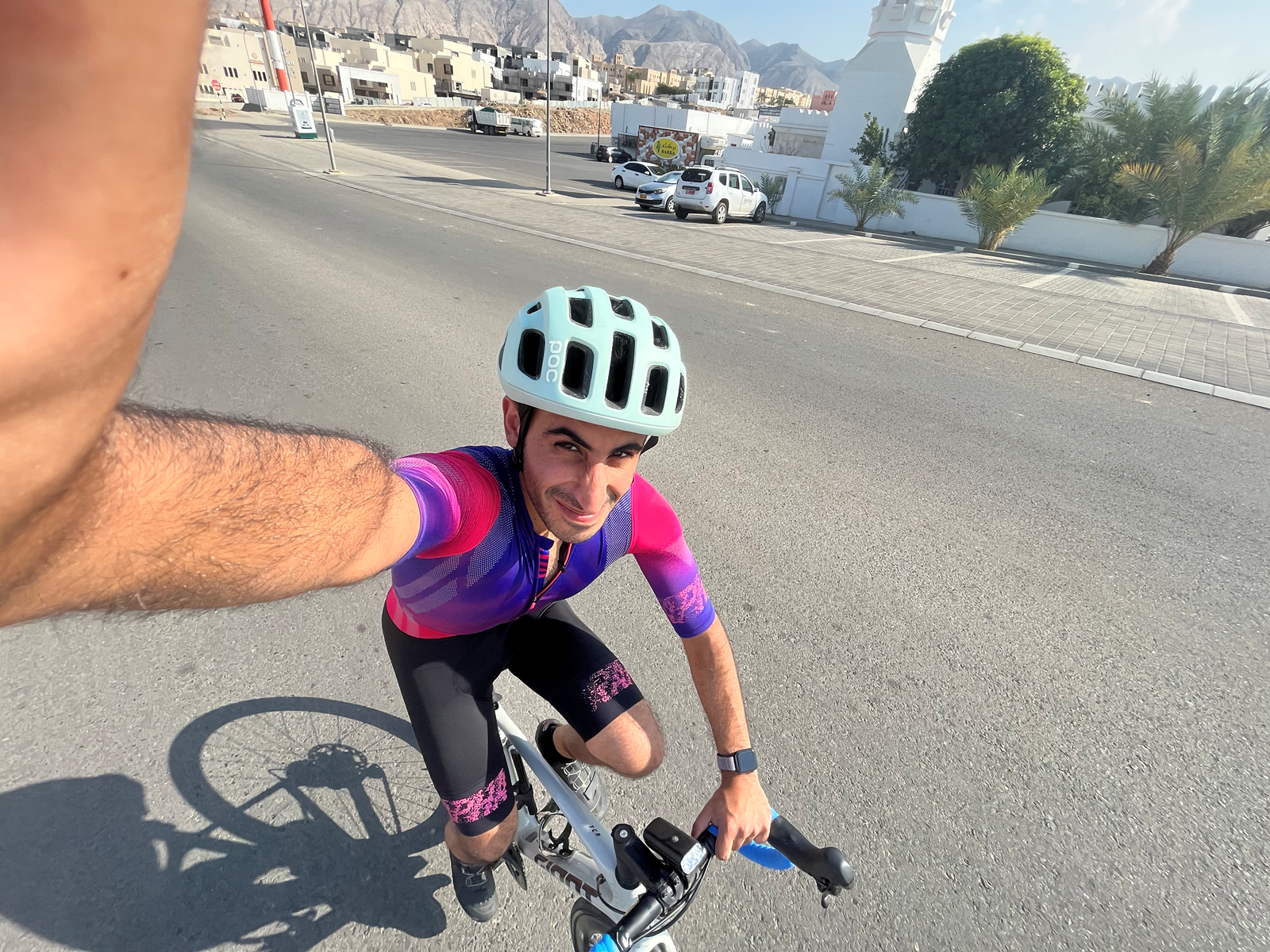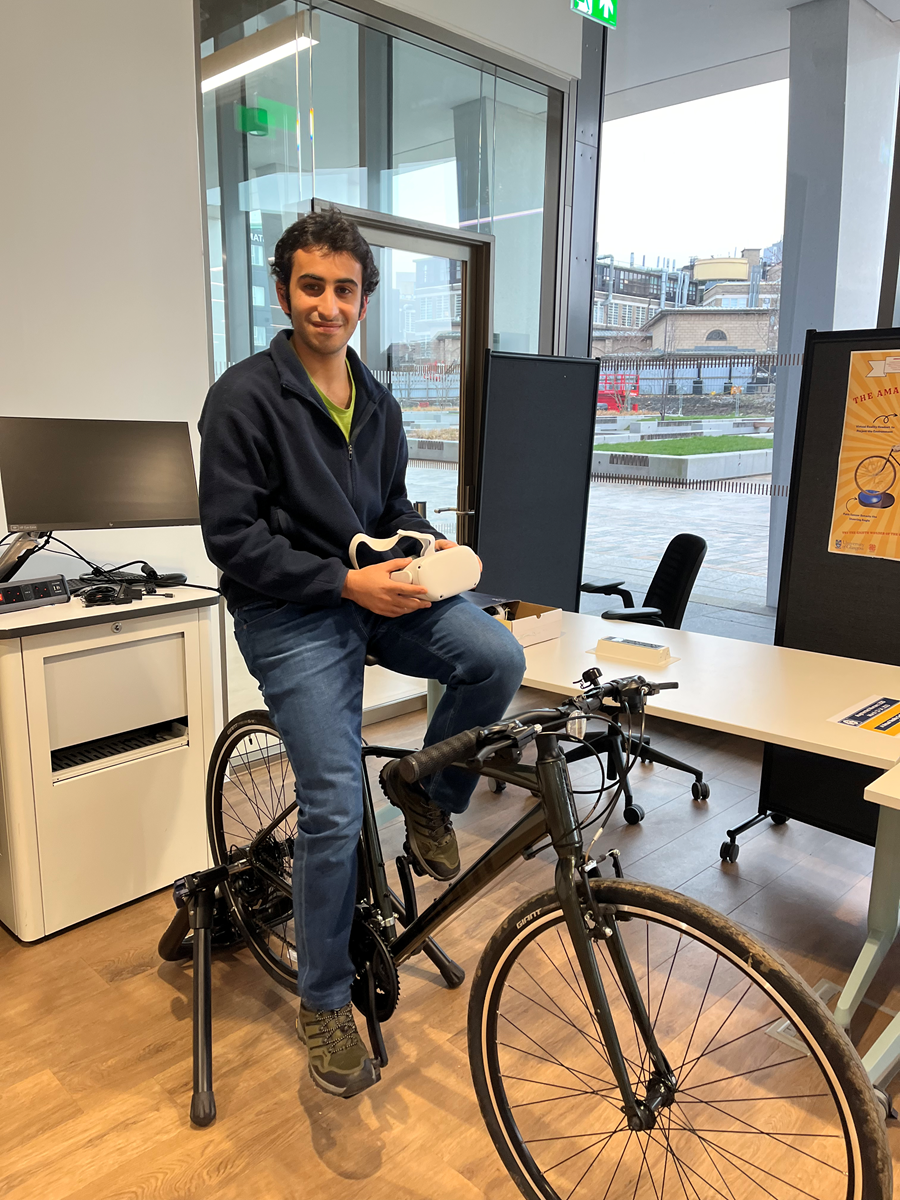A Blog by Ammar Al Taie
In truth, PhDs are deeply personal journeys, each one different from the next. I was fortunate to be supervised by two incredible professors who reminded me often that a PhD is a marathon, not a sprint. Staying positive, being patient, and moving forward — even slowly — are what matter most.
I completed my PhD at the School of Computing Science, University of Glasgow, under the supervision of Professor Stephen Brewster and Professor Frank Pollick. My research was in the field of Human-Computer Interaction (HCI), which focuses on how humans engage with technology and how we can design systems that meet their needs. In my case, I explored how cyclists can safely interact with automated or self-driving vehicles (AVs). You can find my thesis here.
Cyclists are vulnerable road users, and they are frequently involved in space-sharing conflicts with vehicles. These are situations where both parties intend to occupy the same road space simultaneously. Space-sharing conflicts require social interaction to avoid collisions. For instance, a driver might use a hand gesture to signal a cyclist to proceed at an intersection, or a cyclist might extend their arm to indicate their intentions to merge lanes with a driver behind them. These interactions are critical for safety, but they will disappear when AVs replace human drivers. Without these cues, AV-cyclist encounters could become confusing and dangerous.
To address this, I focused on designing and evaluating new interfaces that allow AVs to communicate their intentions to cyclists. This included developing new types of lights on vehicles, as well as wearable interfaces like smart glasses that present cyclists with real-time information. You can find more about these prototypes in the video below.
It can be unsafe to test these new displays in real traffic. To overcome this, I developed an augmented reality (AR) simulator that projected virtual AVs into the real world. Cyclists wore an AR headset and rode in physical space while interacting with life-sized virtual AVs. This approach allowed for safe, immersive, and highly realistic studies of AV-cyclist interaction, which would not have been feasible otherwise. The simulator is in the video below.
Most of my experiments were conducted in the UK, but I also cycle frequently in Oman. The experience is very different there. In Oman, cyclists often ride in close proximity to faster-moving vehicles, without the protection of segregated lanes. This contrast inspired me to replicate my AR-based experiments in three countries with different cycling infrastructures: Oman, where there are few segregated lanes; the UK, where such lanes exist in some areas; and Sweden, where segregated cycling infrastructure is far more widespread. The part in Sweden was conducted during a research visit.
In this cross-cultural study, I tested three AV-cyclist interfaces that communicated different messages: information about the AV’s intention (such as whether it plans to stop); information about the AV’s location (such as whether it is approaching from behind); and a combination of both (for example, indicating that there is an AV on the left that does not intend to stop). There were large differences in preferences across countries.
Cyclists in Sweden preferred receiving location information. Their well-structured cycling infrastructure allowed them to infer AV intentions from its movement alone, because vehicles are often slower when around cyclists in Sweden. In contrast, UK cyclists favoured receiving both location and intention information. This was likely because they often switched between segregated and unsegregated lanes, requiring more adaptable messages. Cyclists in Oman preferred intention-based information. They needed clear signals that could support rapid decision-making without first needing to detect where the vehicle was, because they are accustomed to fast-paced interaction.
This study was particularly meaningful to me. It was the first in my field to explore how cyclists in Oman perceive and behave around AVs. The results were presented at a leading international conference and even received an award. More importantly, the study highlighted the importance of considering local traffic cultures when designing new technologies. Not all solutions developed in Western contexts will translate well to countries like Oman. I hope this work inspires more Human-Computer Interaction research focused on Oman and the wider Gulf region. It also greatly improved the generalisability of my own PhD, ensuring that the final designs were not limited to a UK setting.

I was also part of an incredibly supportive research group, which you can learn more about here. I found that being engaged with the group and collaborating with its members helped me develop my ideas and stay motivated. My advice to others considering a PhD is to choose a topic you truly care about. That passion will help you through the inevitable challenges. In my case, I spent the first few months reading related research and developing a roadmap for the following three years. While that plan evolved over time, having a general structure kept me grounded and focused.
Looking back, my PhD was one of the most rewarding experiences of my life. It allowed me to make a meaningful contribution not only to my field but also to the global understanding of Omani road culture. My work drew the attention of researchers and companies exploring how to adapt AV and wearable technologies to different cultural settings. If you are an Omani student or researcher, I strongly encourage you to apply your work to your local context. You might be surprised at how impactful it can be — both for your field and for your country.
